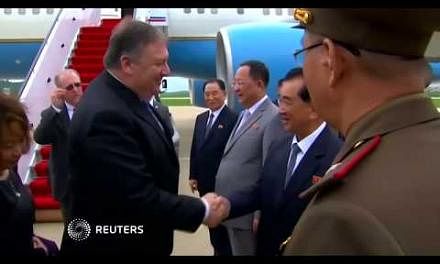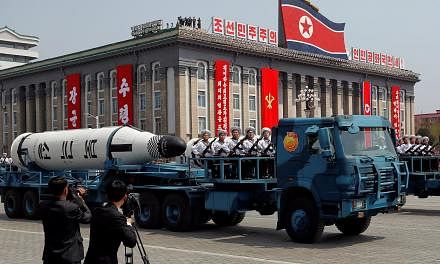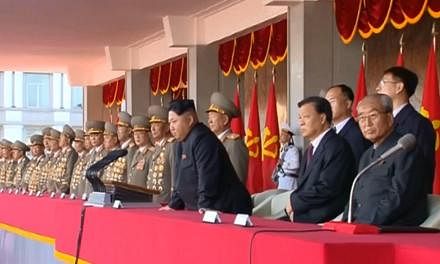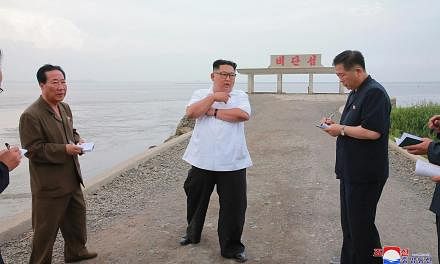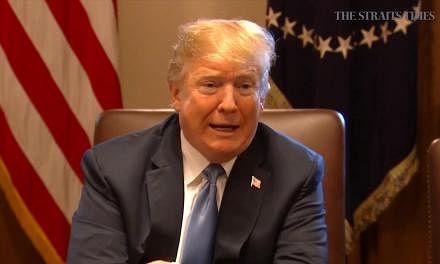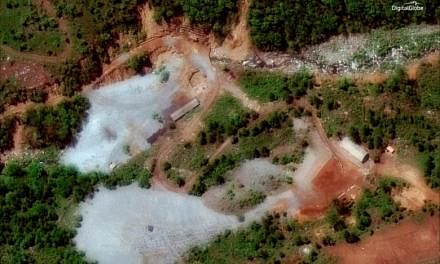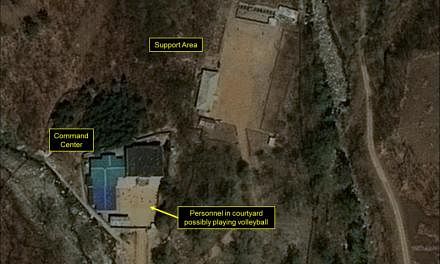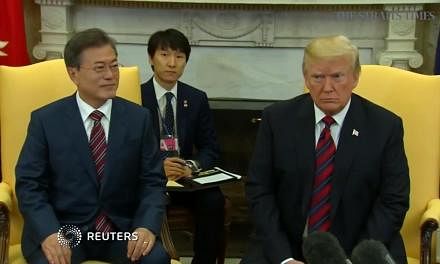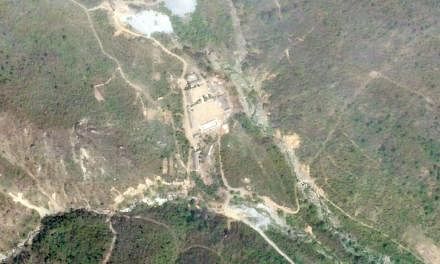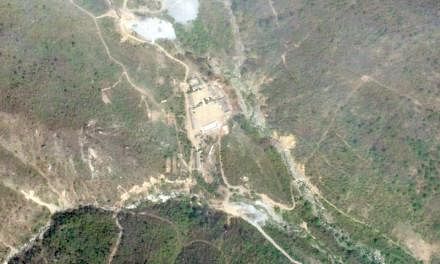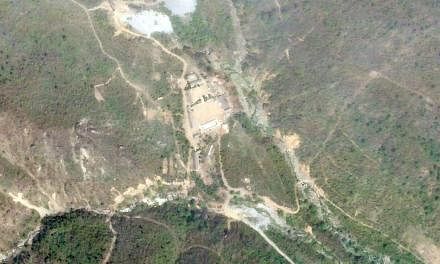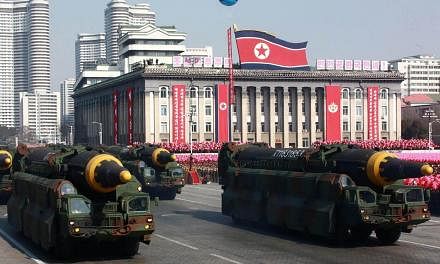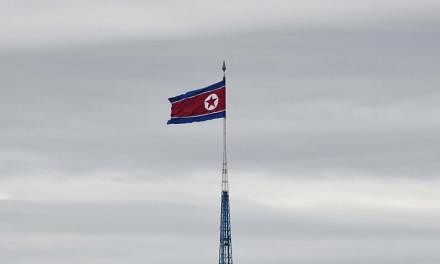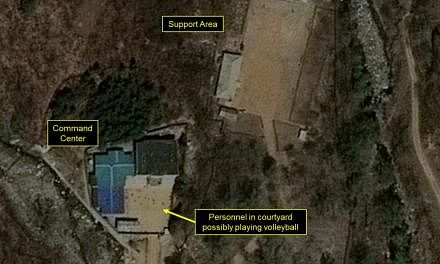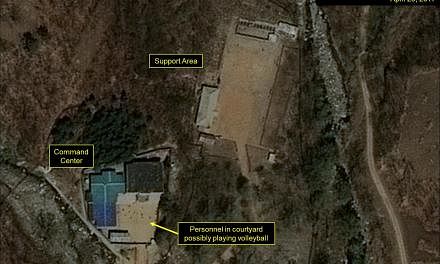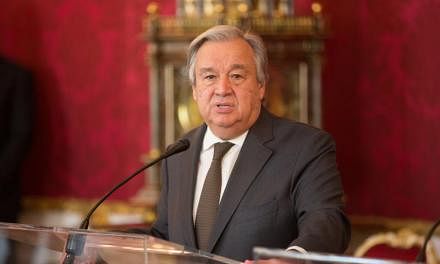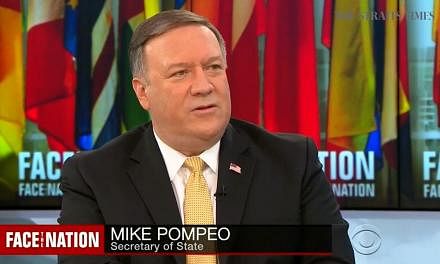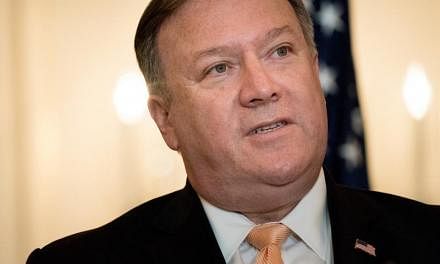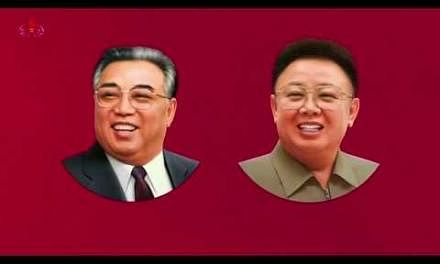WASHINGTON - Experts said military intervention in North Korea remains unlikely - at least for now - as President Donald Trump has few military avenues that would not risk widespread collateral damage for US allies South Korea and Japan.
This is despite Defence Secretary James Mattis telling reporters that "we have many military options".
Trying to curb North Korea's nuclear ambitions through military action has a "fairly low" probability of success, said Mr Doug Paal, vice-president for studies at the Carnegie Endowment for International Peace in Washington.
That sentiment echoes the conclusion of Mr Trump's former chief strategist Stephen Bannon, who told the American Prospect last month (August) that there was "no military solution" for North Korea, according to Bloomberg.
"Until somebody solves the part of the equation that shows me that ten million people in Seoul don't die in the first 30 minutes from conventional weapons, I don't know what you're talking about," he told the magazine. "They got us."
South Korean President Moon Jae In has also pushed back against the prospect of a US strike. He asserted last month the right to veto any military action, saying that decision should be made by "ourselves and not by anyone else". He has also vowed to prevent war at any cost, said Bloomberg.
Despite military action being an unlikely option for now, here's a look at what it would be like if carried out.
OPTION 1: ENHANCED CONTAINMENT
The US currently has various military deployments in deterring North Korea's ballistic and nuclear programme.
This option would involve major increases in spending for missile defence and strengthening military partnership with regional allies, said US military and veteran website Military.com
The US Navy could increase its presence around the Korea peninsula to shoot down ballistic missiles, while the US Air Force could beef up its airpower at bases in South Korea, Japan and Guam, according to BBC.
Considered the least risky, this option is also the least effective. The deployments, including joint military exercises, have been around for a while but have had little success in deterring North Korea, BBC reported.
And the beefing up of its deployments would certainly be interpreted by North Korea as a prelude to a ground invasion, said BBC.
Already, North Korea is seeing the Ulchi Freedom Guardian - the annual military exercise between the US and South Korea which involves tens of thousands of troops - as rehearsals for invasion, according to Agence France-Presse.
OPTION 2: SURGICAL STRIKES
This is a military attack that aims to cause damage only to the intended military target.
According to BBC, the US Air Force and US Navy have the most advanced surgical strike capabilities on Earth. Their missiles from submarines and stealth bombers could target North Korean nuclear sites and ballistic missile facilities.
This strategy, however, probably would not work well enough, according to Bloomberg.
North Korea's missiles and nuclear facilities are dispersed throughout the country's mountainous terrain. North Korea also has decades of experience in tunnelling and both its atomic arsenal and conventional artillery are believed to be underground, protected from attack.
A first strike by the US would be highly unlikely to destroy all of North Korea's nuclear weapons.
That would leave some 10 million people in Seoul, 38 million people in the Tokyo vicinity, and tens of thousands of US military personnel in Northeast Asia vulnerable to missile attacks from the North.
Even if the US managed to wipe out their specific military targets in North Korea, the North's People's Army would still have the capability to inflict damage on Seoul, according to BBC.
The People's Army consists of more than a million regular soldiers and an estimated more than six million reserves and paramilitary troops.
"Even a limited strike (by the US) would run the risk of being understood by the North Koreans to be the beginning of a much larger strike, and they might choose to use their nuclear weapons," said Mr Jeffrey Lewis, director of the East Asia non-proliferation programme at the Middlebury Institute of International Studies.
The US would also need to signal to both North Korea and China - Pyongyang's main ally and trading partner - that a surgical military strike is limited, and that they should avoid nuclear retaliation, said Bloomberg.
OPTION 3: ALL-OUT WAR
A full-scale invasion would be necessary to quickly take out North Korea's artillery as well as its missile and nuclear programmes, according to Bloomberg.
Yet any sign of an imminent strike - such as a buildup of US firepower, mobilisation of South Korean and Japanese militaries and the evacuation of American citizens in the region - could prompt North Korea to strike preemptively.
China and Russia may also be sucked in.
The most immediate reaction from North Korea would likely be massive artillery fire on Seoul and its surroundings. North Korean artillery installations along the border can be activated faster than air or naval assets and larger ballistic missiles that can target South Korean, Japanese or American bases in the region with nuclear, chemical and biological weapons, according to Bloomberg. Those countries have ballistic-missile-defence systems in place but cannot guarantee they will shoot down everything.
"Realistically, war has to be avoided," said assistant professor of international studies John Delury at Yonsei University in South Korea. "When you run any cost-benefit analysis, it's insanity."
In an editorial on Monday (Sept 4), Washington Post said that a war would engulf Seoul, located only 35 miles from the inter-Korean border.
"Nothing is wrong with displays of strength designed to deter the North Korean leader, Kim Jong Un, but ultimately, the danger he poses cannot be resolved by US preemptive action without huge costs for both Koreas," the editorial said.

